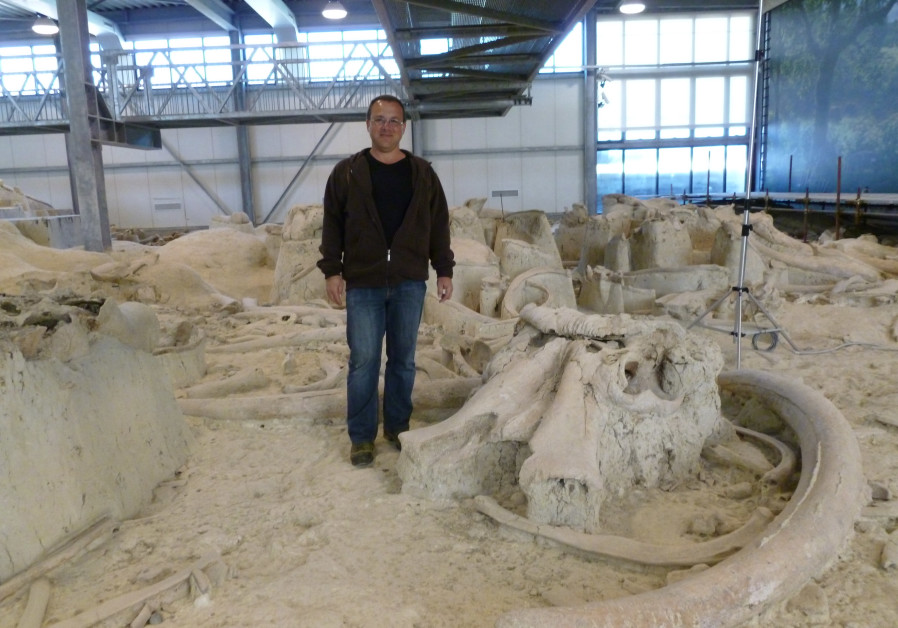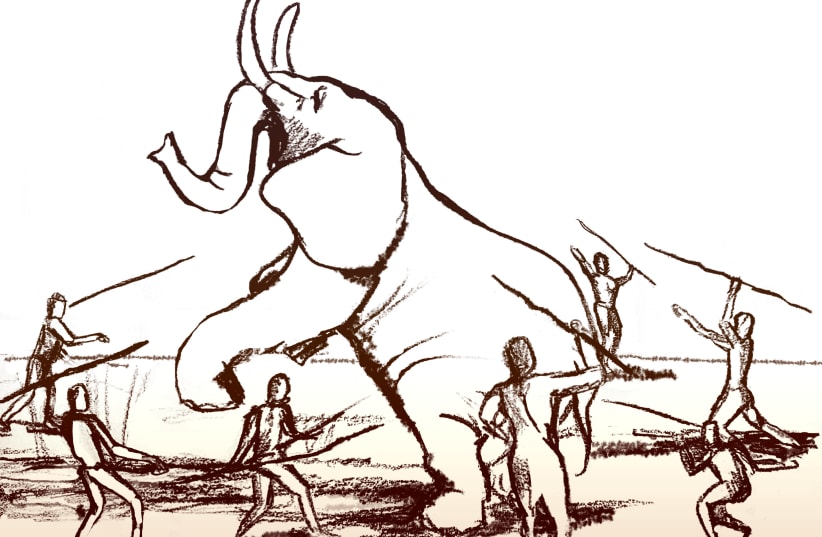Elephants lived in Israel for over 1.5 million years before becoming extinct. Prehistoric humans in the region shared their habitat with them, hunting but also respecting them, Tel Aviv University Prof. Ran Barkai explained during a lecture organized by the Tel Aviv Institute for Italian Culture on Tuesday.
Barkai and Cristina Lemorini, of La Sapienza University in Rome, discussed the results of several years of ongoing research devoted to the topic of the interaction between elephants and humans in the Levant.
“Throughout hundreds of thousands of years, people were eating elephants,” Barkai said. “For this purpose, they developed specific tools.”
The archaeologist explained that the big mammals lived in Israel as early as two million years ago, and they went extinct for unknown reasons around 400,000 years ago. They were straight-tusk elephants, twice as big as modern elephants.
In consideration of the large number of calories that ancient humans needed, between 3,000 and 5,000 every day – “They did not sit all day long in front of Zoom” – elephants represented a unique nutritional opportunity. Likely, not more than one or two elephants a year were hunted by each group, and a single animal would sustain the whole crowd for a long time.
“We can make a comparison with contemporary artic populations: They kill a whale per year and it supports them throughout the winter,” the archaeologist pointed out.


In the site of Revadim, located in the Shfela region in southern Israel, researchers excavated hundreds of flint tools and elephant remains.
However, the dietary aspect represented only one side of the interaction between ancient proboscideans and prehistoric people.
“We have archaeological evidence that shows that there was a special relationship between humans and elephants,” Barkai explained.
The two species, the scholar emphasized, present several similarities: they take care of each other, educate their young and mourn their dead.
“I believe that ancient humans noticed it in the same way that modern researchers do,” he said, adding that artwork depicting elephants has been uncovered in several Paleolithic sites across Europe, showing the awe that the animals inspired.
In addition, archaeologists have excavated artifacts made of elephant bones which were replicas of the stone tools ancient humans used to butcher the pachyderms.
“We believe that these objects did not serve a practical function; they were symbolic,” Barkai highlighted.
“There is more: there are strong arguments to claim that prehistoric people used elephants’ migrating routes to travel out of Africa,” he added. “Elephants are highly dependent on water, and they have a very good memory. They paved the way for humans to leave Africa and spread in other regions.”
